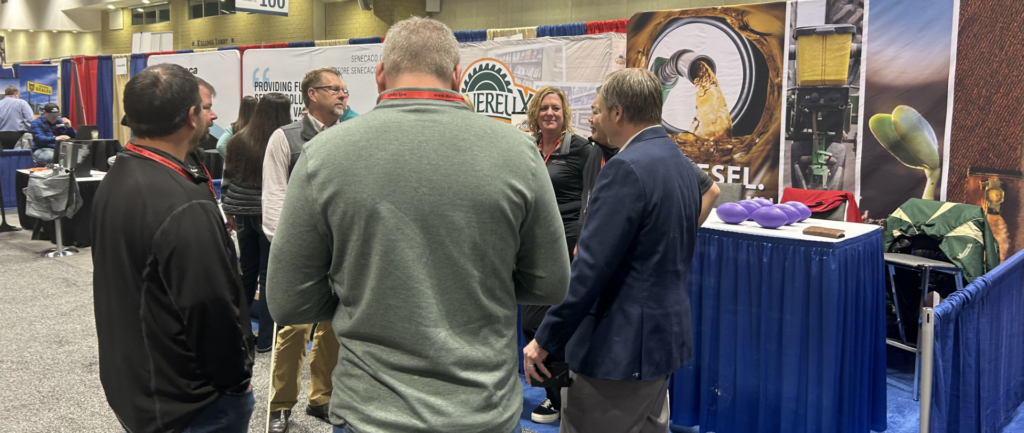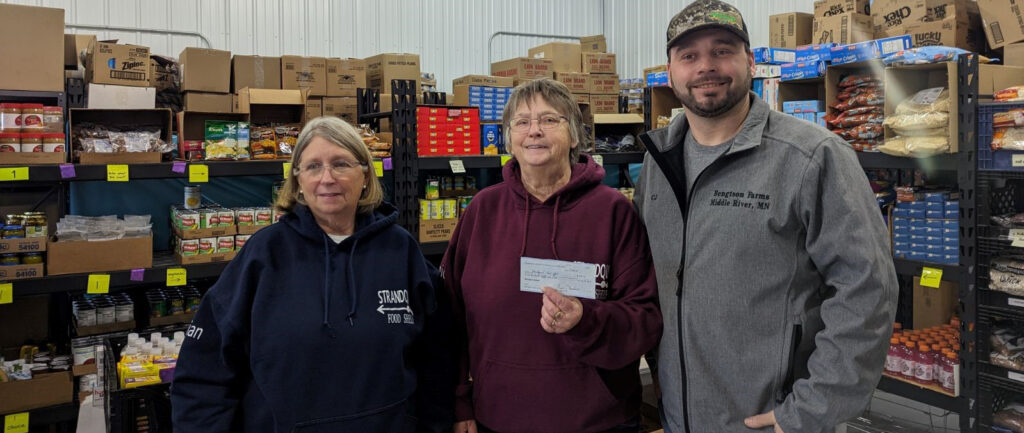Minnesota’s soybean farmers may know a thing or two about growing a valuable crop, but beyond the elevator, many don’t know where their soybeans are headed.
Ten Minnesota and three North Dakota soybean farmers are getting the chance to see international end-users and markets on the Minnesota Soybean Research & Promotion Council’s 2018 See For Yourself mission to Chile and Colombia.
“Most of us farmers harvest our soybeans and we deliver them to a local elevator, and that’s it for us,” says Wheaton, Minn. farmer and See For Yourself participant Rodd Beyer. “We know they may end up on a train, headed to the Pacific Northwest, but we don’t think beyond that. This mission has allowed us to meet with our end-users and learn about the international markets and customers buying our soybeans.”
In order to continually grow markets and promote soybeans, the soybean checkoff invests money overseas to ultimately help farmers’ bottom lines. The See For Yourself program is an opportunity for farmers to see these investments firsthand.
The participants just completed the first leg of the mission, seeing research investments and market opportunities in Chile.
University research plot
The University of Minnesota and North Dakota State University soybean breeding program have established a soybean plot at the National Agricultural Research Institute outside Santiago. The plot allows soybean breeders to use two growing periods per year, funded by the Minnesota soybean checkoff.
“The reason for the soybean research plot in Chile all comes down to getting new information and lines to the farmers faster,” says Ben Campbell, UMN soybean breeder.
The group learned about new varieties being tested in the plot, along with research in higher oil and protein content, increased yield, and soybean cyst nematode, phytophthora and aphid resistance, to name a few.
“When you have two growing periods, you can continue research throughout our winter months,” says Austin Langley, a North Dakota farmer who is also in Chile. “Being able to utilize Chile’s winter months, it creates a seamless line in the research investigation.”
Pork intake and processing
The participants were able to visit AgroSuper, Chile’s number one producer of pork. The processing plant owns its pigs, harvesting 8,000 pigs per day, and employing 2,000 individuals. They own over 1,000 barns.
“Meeting with these companies allows us to make a connection with those buying our beans, or who should be buying our soybeans,” Beyer says. “We want these companies, who are making decisions to buy from the United States or Argentina, to see the quality and value of our soybeans.”
Aquaculture
 A large majority of Chile’s agriculture industry is aquaculture. Ranking number two behind Norway, the aquaculture market, specifically salmon, is a new opportunity for soybean farmers.
A large majority of Chile’s agriculture industry is aquaculture. Ranking number two behind Norway, the aquaculture market, specifically salmon, is a new opportunity for soybean farmers.
“There are a lot of new uses and markets for soybeans, aquaculture being one,” Beyer says. “Last year, we (the United States) exported 5,000 tons of soybean protein concentrate (SPC) to Chile. This is only three percent of what Chile imported last year. There’s room for the United States to expand in South America.”
Participants were able to see a wide variety of aquaculture companies and processing in Chile. From hatcheries to ocean breeding cages, to processing and nutrition and disease research, the participants saw the salmon industry come full circle.
“It always amazes me how versatile soy can be,” Langley says. “From livestock consumption and human consumption, to aquaculture feed and the many bi-products of our soy. Being in Chile and Colombia shows us (farmers) how the soybean checkoff is investing in research and nurturing our markets.”
The See For Yourself participants travel next to Colombia to learn more about this emerging market for U.S. soy through meat and feed.
“In 2017, Colombia was the third-largest importer of U.S. soybean meal and the fifth-largest importer of U.S. soybean oil,” Patrick O’Leary, MSR&PC chairman tells the group. “Their growth is outstanding.”
MSR&PC tentatively hosts a See For Yourself mission every two years, selecting participants through an application process.







